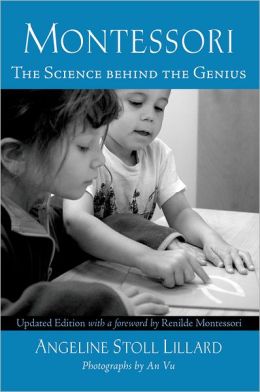The following are notes from an excellent book by Angeline Lillard on the philosophy and practice of Montessori Education. Learning about Montessori Education made me wonder:
Is Montessori Education just good educational practice that all teachers should be applying?
- What portions of the model should be applied to a high school setting?
- What are the shortcomings/downfalls of Montessori Education?
- How can Montessori Education be applied, if at all, to a 21st century classroom with technology and tests?
- Movement and cognition are closely entwined, and movement can enhance thinking and learning.
- Our brains evolved in a world in which we move not remain sedentary at a desk
- Thinking is expressed by hands before it can be articulated
- For young children, thinking and moving are same process
- Therefore, Montessori classrooms include many manipulations
-
Learning and well-being are improved when people have a sense of control over their lives
- Students thrive on having choice and control in their environment
- Developmental process should allow students to have increasingly levels of choice
- Good programs impose definite limits on freedom, however Montessori children get to make more decisions than traditional classrooms:
- what to work on, how long to work, with whom to work on it, etc.
-
People learn better when they are interested in what they are learning
- Learning best occurs in contexts of interest
- Interest can be personal or situational
- Dr. Montessori created situational interest by designing materials children would want to interact with
- Take advantage of interests students have at particular time periods (e.g. preschool children want to develop language)
- Students are encouraged to pursue their imaginations but not at expense of broad swath of decided curriculum
-
Extrinsic rewards to an activity, like money for reading or high grades for tests, negatively impacts motivation to engage in that activity when the reward is withdrawn
- Gold stars and grades are disruptive to a child’s concentration
- Sustained, intense concentration is central to Montessori education
- Rewards of education should primarily be internal
- Most children already like to learn; it’s best sustained when extrinsic rewards are not part of the framework
- Collaborative arrangements can be very conducive to learning
- Elementary age children are generally intensely social
- Students may work alone by choice
- They pursue knowledge and create products in self-made groups
- Working with other students is consistent with their psychological needs
-
Learning situated in meaningful contexts is often deeper and richer than learning in abstract contexts
- The application and meaning of what students learn should be clear to them
- Instead of learning primarily from teachers or texts they should learn by doing
- e.g. students who have developed interest in bridges can go interview an structural engineer
- Particular forms of adult interaction are associated with more optimal child outcomes
- Adults set clear limits but set children free within those boundaries
- Adults should sensitively respond to children’s needs while maintaining high expectations
- Leads to students demonstrating maturity, achievement, empathy
- Traditional schools have too much teacher authority and progressive schools too little
- Montessori advocated for authoritative parenting
- Order in the environment is beneficial to children
- Montessori classrooms are very organized, both physically (in terms of layout) and conceptually (in terms of how the use of material progresses).
- Order is helpful to learning and development
- Order has a positive neurological impact on children’s senses.

